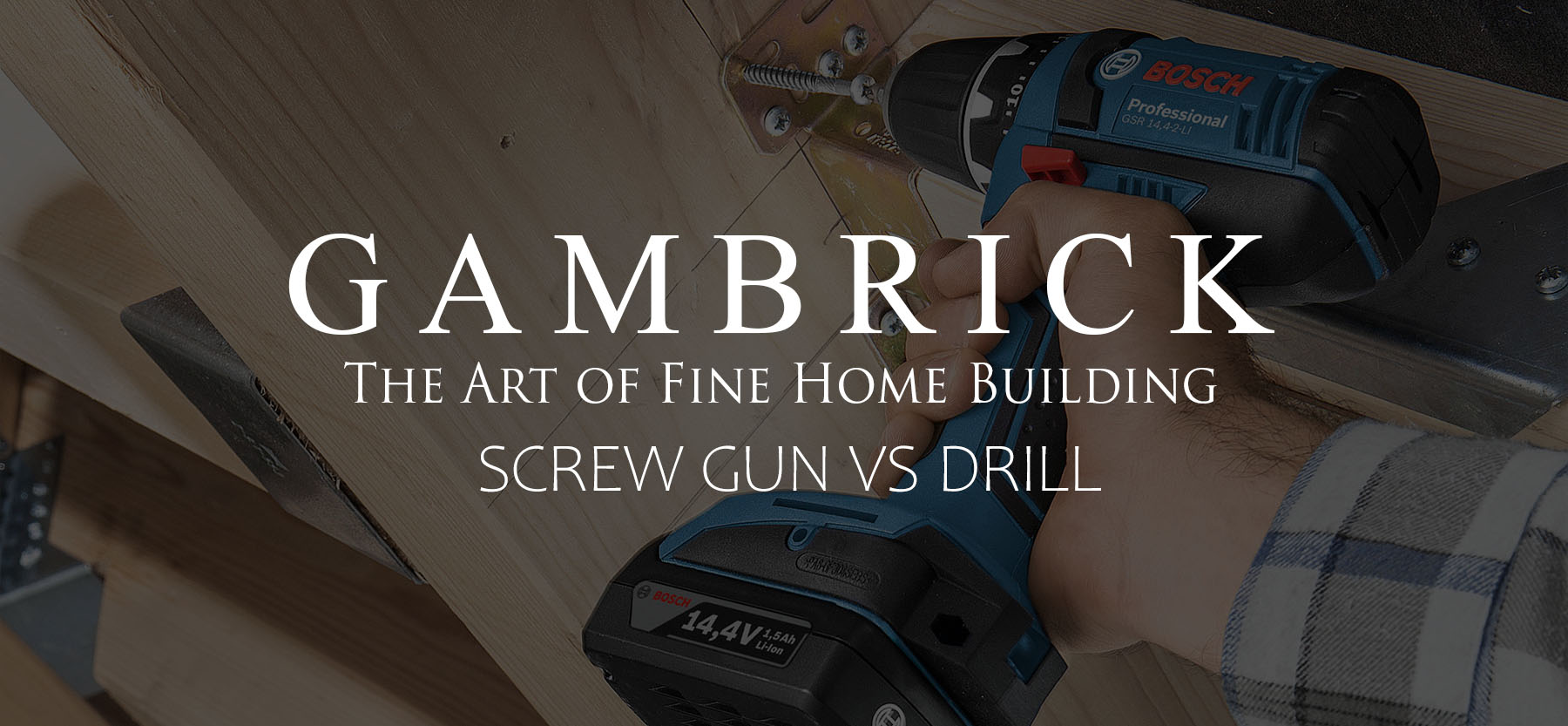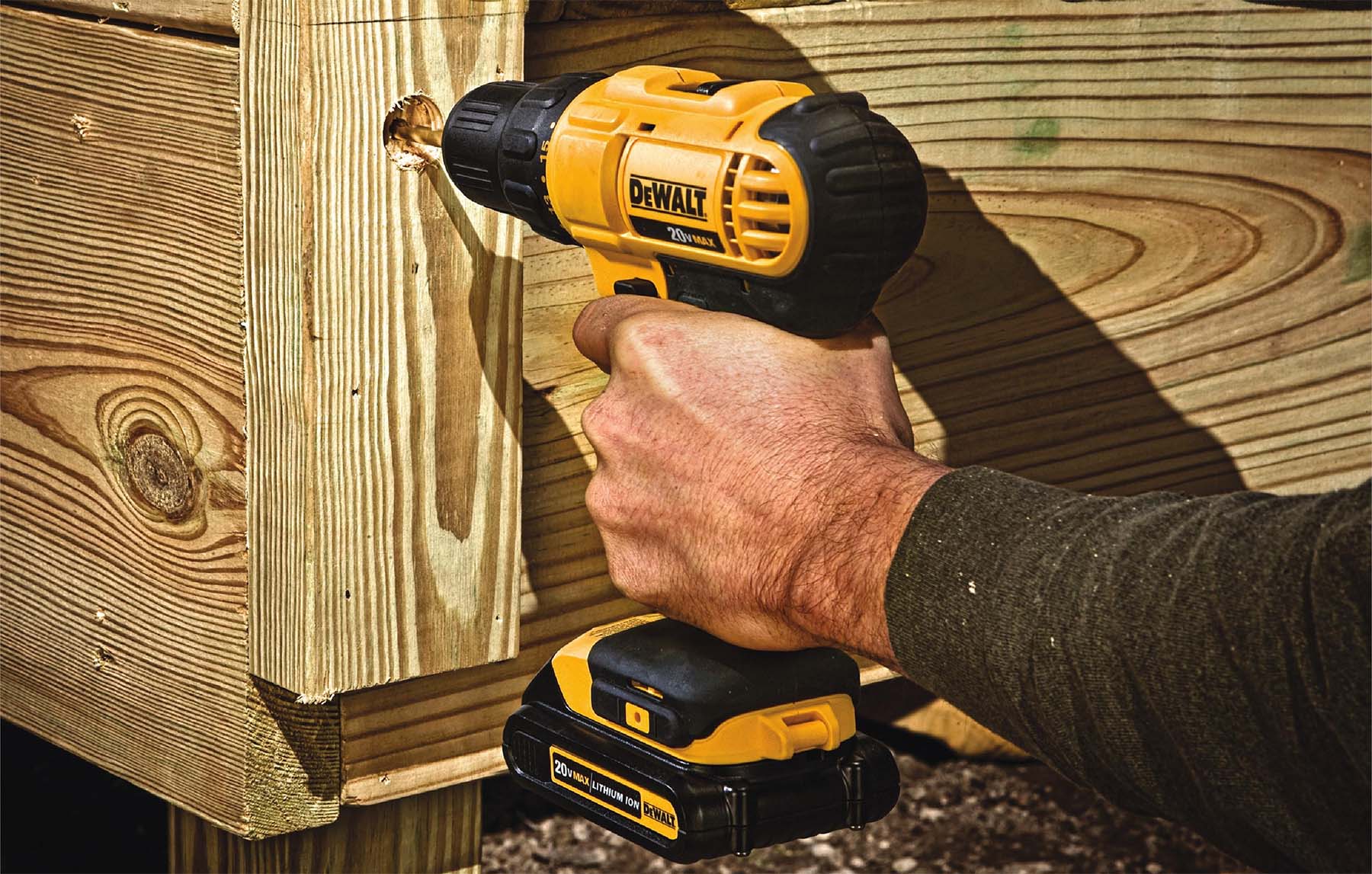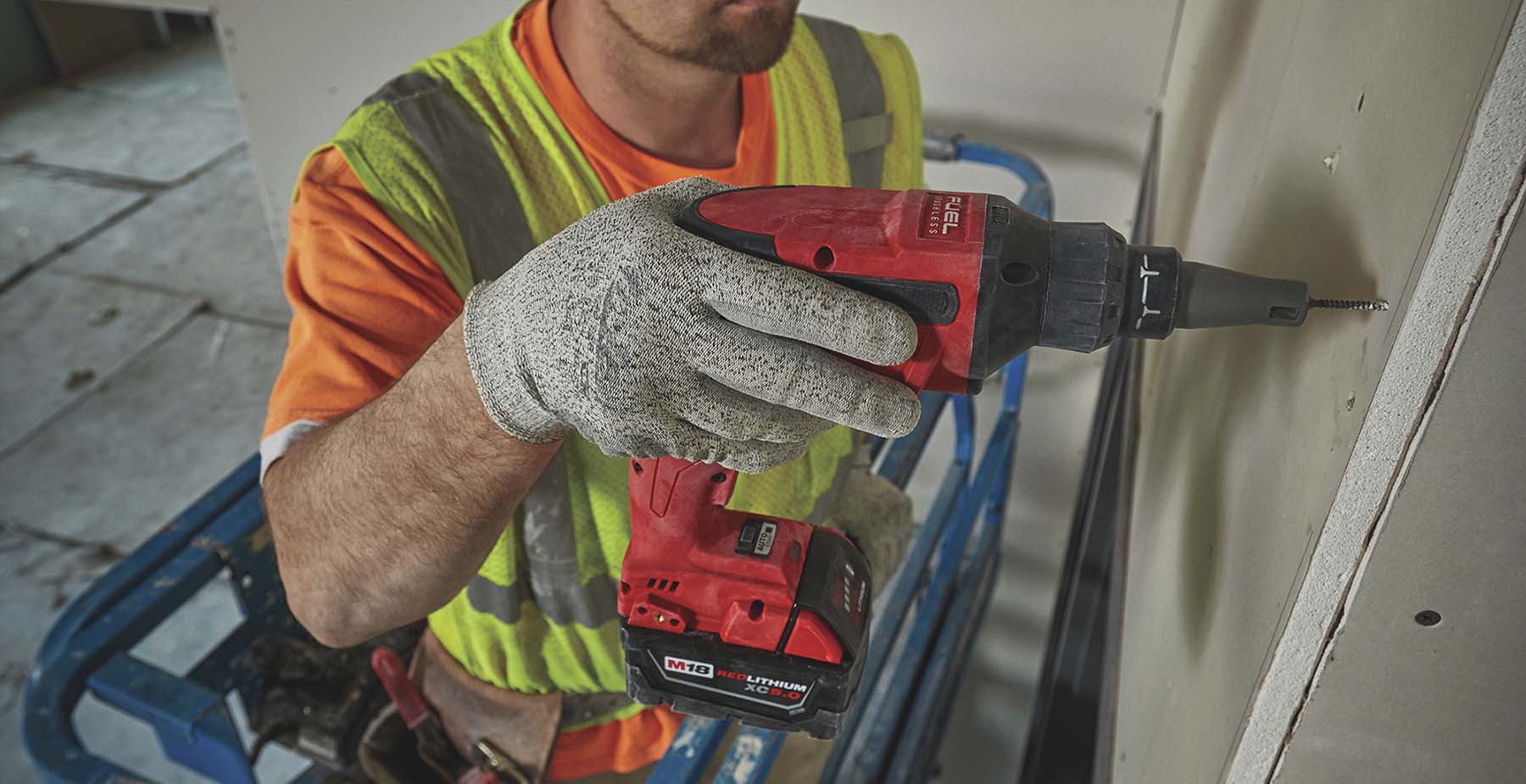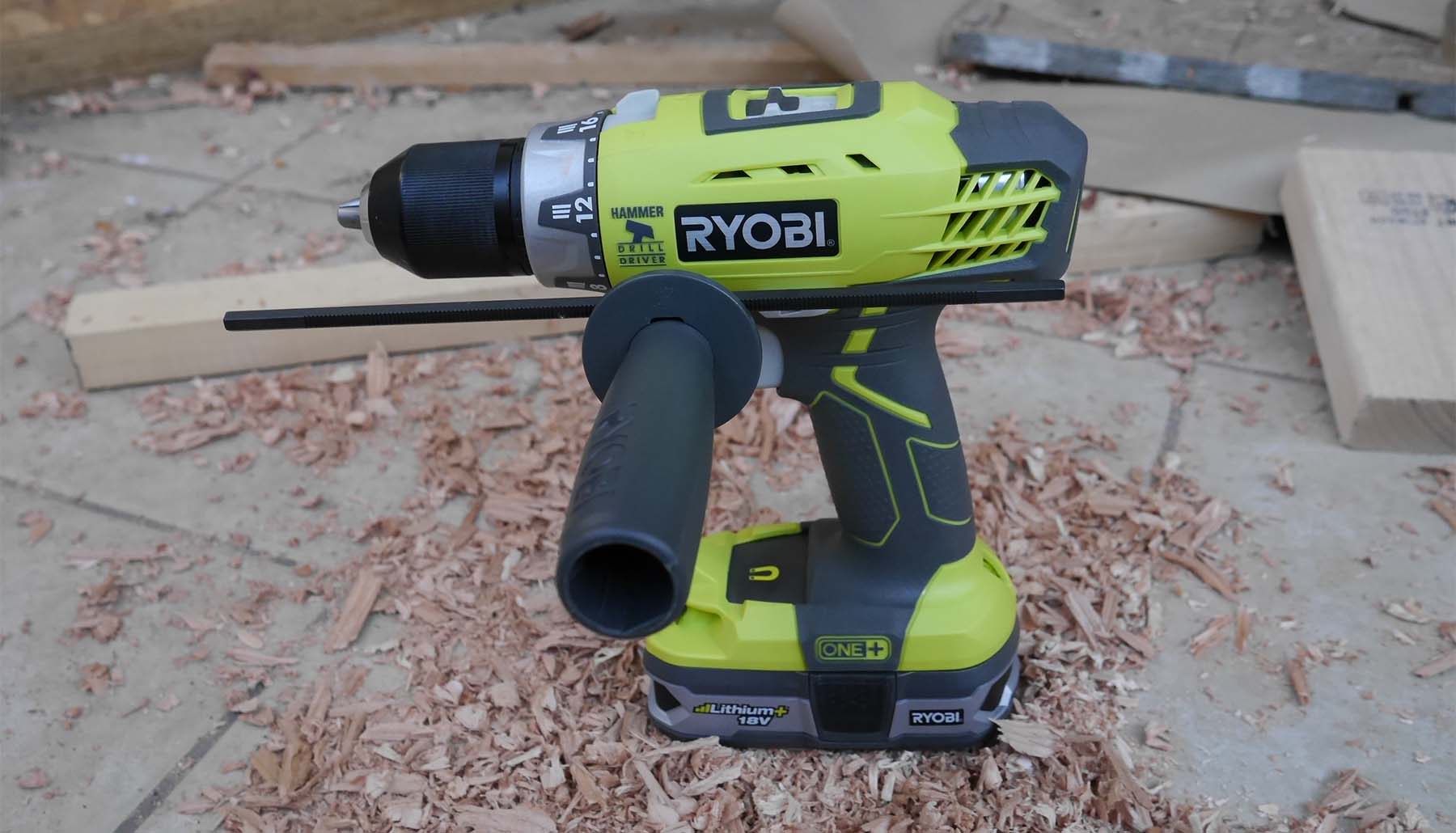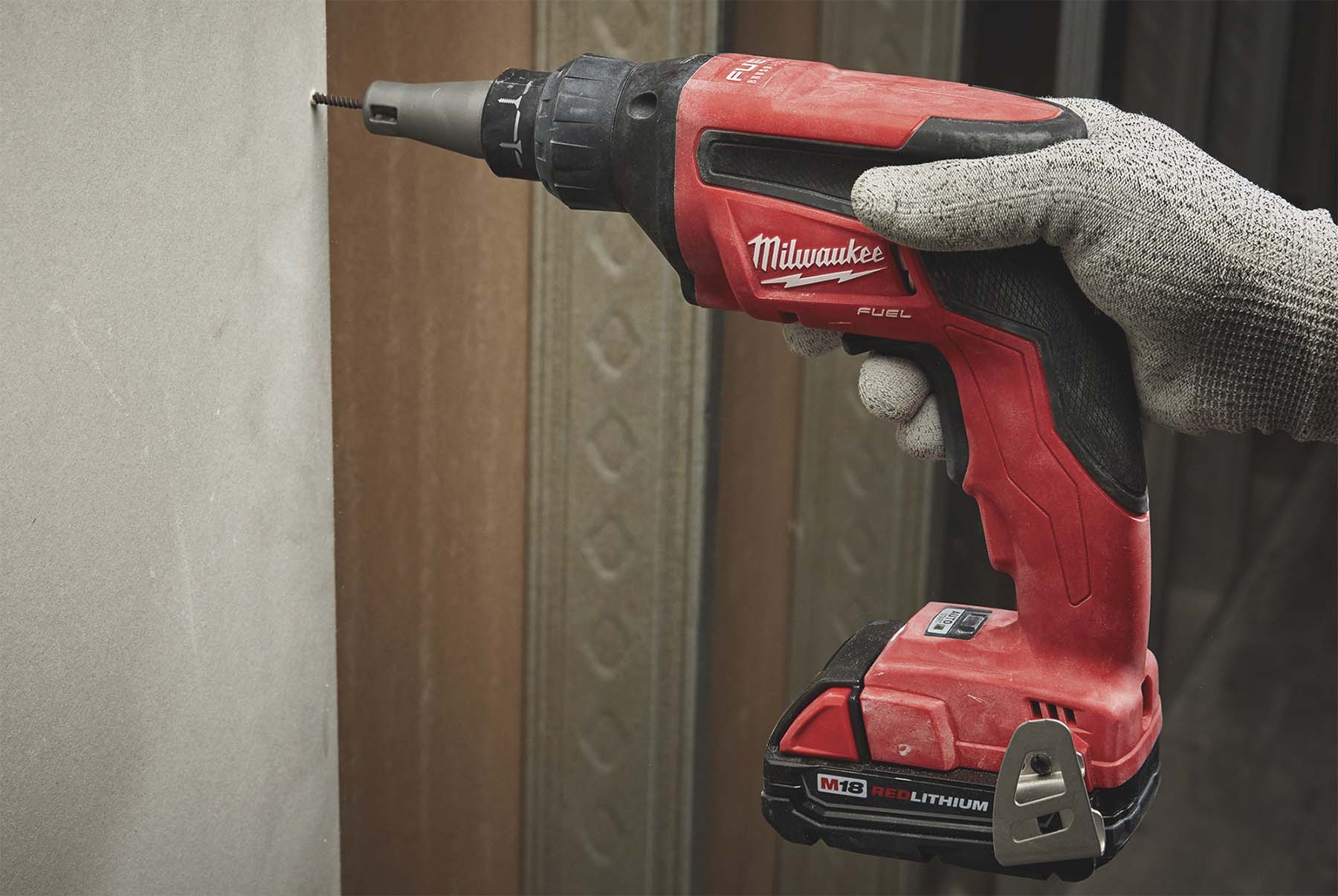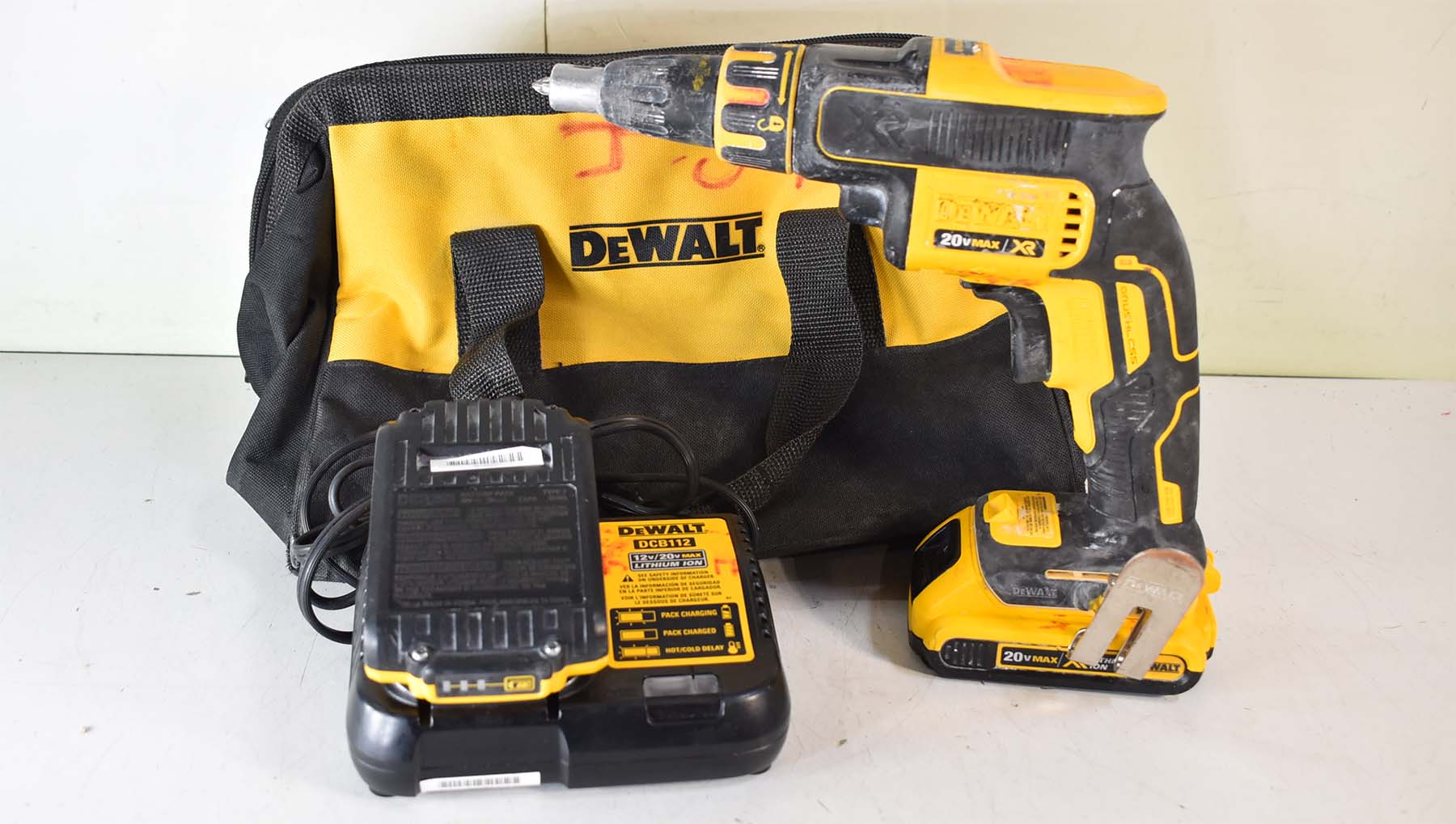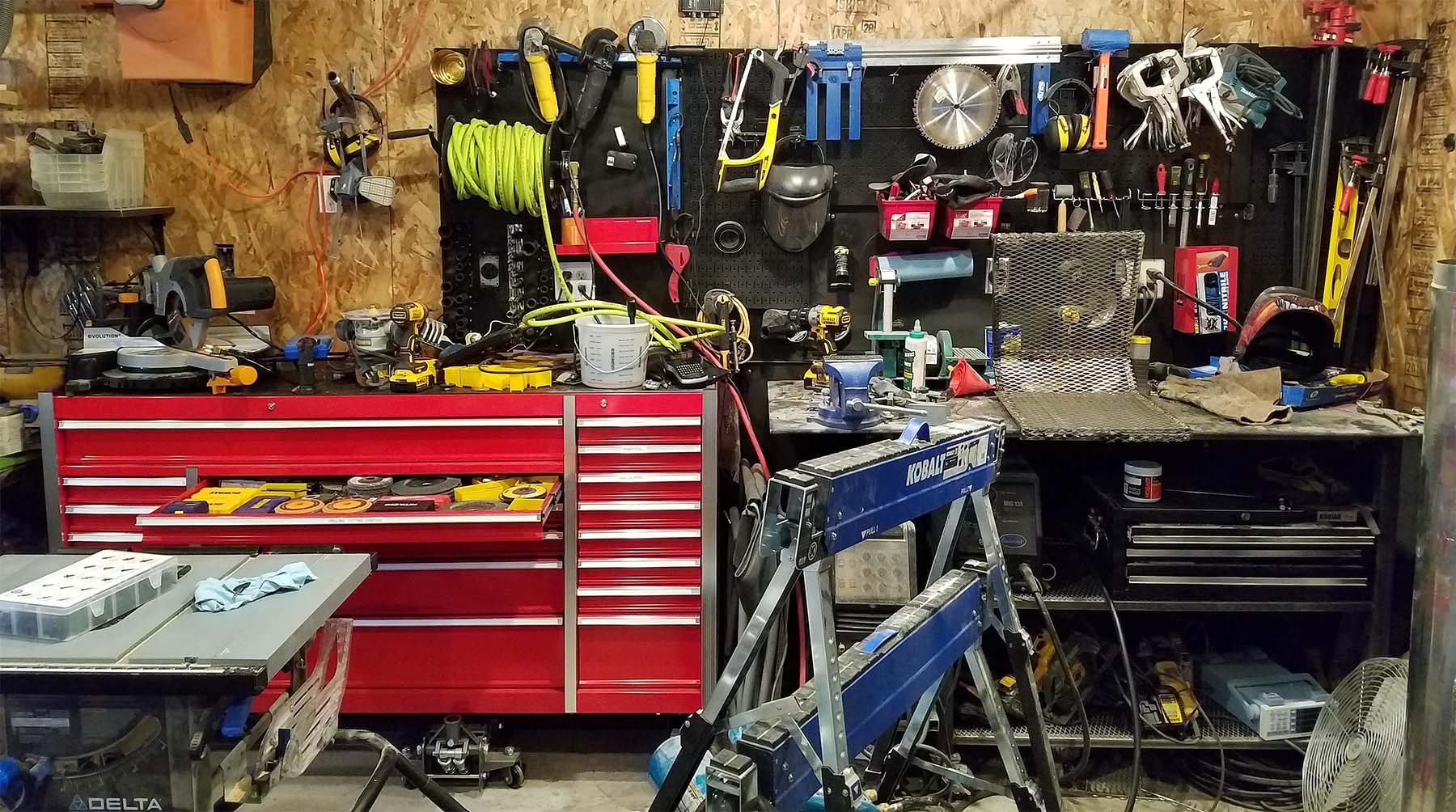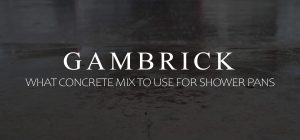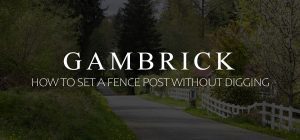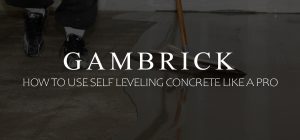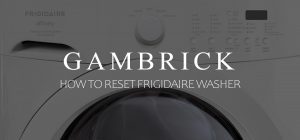Screw Gun Vs Drill
Having the right tool for the job is essential when you make your living working with your hands. Of course, this means having to know exactly what the right tool is for every job. While some tools do have a multi purpose design, some are more specialized. One of the most basic tools in any contractor’s bag are the drill and screw gun. Both definitely fall into the category of multi purpose. Each having their own strengths and weaknesses. When considering when to use a screw gun vs drill it’s a good idea to first understand each tool and what job their best used for.
Everyone knows what a drill is. They’re either corded or cordless, come in a variety of sizes, and are used mainly to drill holes with a drill bit. However, a drill can also be used to drive screws with the right attachment.
So what exactly is a screw gun? How is a screw gun different than a drill? Do you need a drill and a screw gun? Can you drill holes with a screw gun? These are just a few questions that any aspiring contractor would ask when considering the screw gun vs drill debate. Although the terms “drill” and “screw gun” are sometimes used interchangeably, they’re actually different tools designed to do different things. In this article, we’re going to settle any confusion you may have regarding either of these tools, give you our opinion on which of them would be the better, more versatile tool to own, along with some pro tips and reviews.
Screw Gun Vs Drill – What Are Drills Designed To Do?
A standard hand held drill is an excellent all purpose power tool. The head includes a chuck, either keyed or key less, which is used to hold bits firmly in place. Both standard and hex bits can be used, which enhances a drills versatility. Hand held drills generally have a low speed used for driving screws and other fasteners and a higher speed meant for drilling. Standard power drills also include a clutch, allowing you to adjust the level of torque. This is important to prevent fasteners from being over tightened and to prevent the drill from damaging the material your drilling into.
Standard hand held drills are primarily used for drilling holes and driving in small fasteners.
What Are The Benefits Of Using A Drill?
Relative to a screw gun, a drill is an extremely versatile tool. You can completely change a drill’s purpose by changing out the bit you’re using. One minute your drilling holes, then your screwing in a Phillips screw, then a square head screw, and then drilling holes again. Anyone that’s ever done construction will tell you being able to multi task on a job site is a must. You never know exactly what you’ll be doing from day to day in order to get the job done. Maybe you’ll have to tighten and loosen some nuts and bolts, drill small and then large holes, and even stir some paint.
A hand held drill is a contractor’s best friend and can accomplish almost anything you need provided you’ve got the right drill bit. I good assortment of interchangeable bits are the key to getting the most out of your drill.
Most drills come with multiple clutch settings. This allows you to run the drill at a lower speed with very high torque, or higher speeds with lower torque so that you can do a wide variety of tasks with equally good control.
Although drills can drive screws. They’re not nearly as good at is as a screw gun is.
What Are The Downsides Of Using A Drill?
Drills are the perfect example of a jack of all trades tool. While it’s capable of performing a wide variety of tasks, it won’t do certain tasks as well as specialty tools will. A drill doesn’t pack the same amount of power or have the precision you’d get from a drill press. And it doesn’t give you the same amount of torque as an impact driver. Even though it can screw holes and drive screws just fine, it’s not the absolute best tool for most jobs.
When it comes to drywall, screw gun vs drill, the screw gun has the drill beat. Screw guns run at a much higher maximum speed than drills do. Often, they’re about twice as fast as drills, even when using the same amount of power. That means they have far lower torque. While that may sound like a bad thing, the lower torque means that you have more control when it comes to driving the screws to the correct depth in sheet rock.
Drills also struggle in situations where precision is required. It’s hard to drive a lot of screws in sequence to the same depth with a drill. Instead, it does far better at loosening, tightening, or drilling tasks where precision doesn’t matter. For example, it doesn’t matter how far you drill a hole through a board, as long as the hole goes through the board. When you have large margins of error, a drill performs just fine. When those margins tighten, drills become less useful.
What’s Better A Brushed Or Brushless Drill?
One major consideration when choosing a drill is whether or not to get a tool with a brushed or brushless motor. Due to friction produced in its operation, a brushed motor is slightly less efficient than its brushless counterpart. Brushless motors operate without friction which has a few benefits. More power, more precision and power control, less heat generation and a longer life battery. In addition, brushless tools require less maintenance. Due to the friction produced by contact, the parts in a brushed tool may occasionally need replacing. However, these advances in brushless technology come at a higher cost.
If your a professional using your drill every day, investing in brushless tools will be a great long term value. However, if you do projects at home and use a drill once or twice a year, a brushed drill will do just fine and will save you some money.
Should I Buy A Corded Or Cordless Drill?
Few power tools are as versatile as a handheld drill. It makes holes in wood, steel, metals, concrete, drywall, plastics and lots of other things if you have the right bit. You can even make threaded holes to accept a machine screw. Drive any number of threaded fasteners from wood screws, to drywall screws to concrete screws. Drills not only create specialized holes for pocket screws, they drive in the screws too. Use a nut driver bit or a socket to blast through assembly work, tightening a bolt head or a nut. There are so many uses for a good hand held drill it’s hard to name them all. But what about the cord? What’s better, a cordless drill or one with a cord?
Here’s what you need to know to select the right drill.
Cordless Drill
Cordless drills are battery powered hand held tools for making holes and driving in screws, nuts and small bolts. Equipped with a clutch that disengages the drill’s drive train when the tool reaches a specified amount of torque (turning force). By disengaging the drive train at that point, it prevents stripping the fastener head, snapping the fastener off or driving the fastener right through a piece of wood.
Where To Use It:
Use these anywhere you need to make a hole or drive a screw, set a nut or tighten a small bolt. Cordless drills are good for dozens of tasks provided you have the right bit.
Mechanics:
Four things determine the work that these tools do.
Battery voltage: It ranges from 8 volts all the way up to 60 volts with 12-volt and 18-volt the most common voltages. The larger the battery/motor voltage, the heavier work these tools can do. Increase the voltage and you can drill larger diameter or deeper holes, drive larger screws or tighten a bigger nuts. Think of volts as a measure of battery power.
Battery size: This is measured in amp hours. The larger the battery’s amp hours, the longer you can operate a cordless drill without having to change the battery. Think of amps as a measure of battery life.
Functions: Cordless drills are always equipped with a clutch that allows the tool to drill or drive, but it may also be equipped with a hammer function that allows the tool to drill a hole in concrete or stone using a carbide-tip masonry bit.
Chuck size: Cordless drills are equipped with two different size chucks, 3/8 inch or ½ inch. Choose a product with a larger chuck diameter if you expect to routinely drill larger diameter holes.
Purchasing power:
There’s no shortage of great deals on cordless drills, hammer drills and specialty tools.
Pro Tip:
Consider buying a factory refurbished tool at a steep discount. Sometimes these are essentially brand new tools that have no more than a few minutes or a few hours of run time. They have to be cycled through the factory reconditioning process because they’re no longer considered a new product. A top of the line refurbished tool is generally better than a cheap tool that’s brand new and often times they’re cheaper and come with a limited warranty.
Corded Drills
Corded drills are powered by a 120-volt motor and a conventional 3-jaw chuck. These drills are traditional tools often used for heavy duty applications to drill holes in wood, concrete, and steel. Since they’re not equipped with a clutch, they’re not designed to tighten or drive fasteners. They excel at hole drilling. Although you can drive screws and other fasteners just like a cordless drill if you want to.
Where to use it:
Use these anywhere you need to make a hole. These drills are typically larger than cordless drills so space is sometimes an issue. Where the drill’s size might pose a problem, specialty tools like the right angle drill are available.
Mechanics:
A few things determine the work that drills can do.
Amperage: Amperage is the flow of electrical current. Corded drills come in a range of motor capacities from 6 to 13 amps. The more amperage they draw, the heavier the work you can expect to do with them.
Chuck size: Corded drills will have a 3/8, ½-inch, 5/8-inch or ¾ inch chuck. Choose a chuck with a larger capacity diameter if you expect to routinely drill large holes.
Functions: Corded drills may or may not be equipped with a hammer function for drilling concrete and stone. Most corded drills are variable speed to help you better drill a combination of materials. But a few are single speed.
Purchasing power:
There’s no shortage of great deals on corded drills, hammer drills, and specialty tools and compared with cordless drill they’re generally cheaper. You can buy a great corded drill for around $50 bucks.
What Is A Screw Gun?
A screw gun is sort of a hybrid of a drill and an electric screwdriver. When comparing a screw gun vs drill for a task involving driving lots of screws, the screw guns wins easily since that’s what a screw gun is designed to do. Some screw guns automatically feed screws from a clip which makes installation must faster.
It isn’t designed to drill holes but can if you have the right bit and aren’t pushing the drill too hard. For larger holes or when drilling through tough materials use a drill.
Imagine tackling a project that requires driving in thousands of screws, each one having to reach a specific depth. Hanging 1,000 feet of drywall could take days if you were doing it with a hammer and nails, but with a screw gun, you could get it done in a day.
In a nutshell, a screw gun is a hand held tool that allows users to drive screws effectively and efficiently. The main issue of hanging drywall without a screw gun is driving the screw deep enough but not too deep. In the old days drywall was hung with nails which resulted in nail pops. But today, the pull of a trigger can embed screws at the perfect depth over and over again.
Because drywall will later need spackle and sanding, driving the screws in perfectly is a good idea and more professional. It may not seem like a big deal to you now but when your spackling an entire house, and trying to earn a living, saving time anywhere you can means a lot.
With a screw gun, you can set the depth to the perfect amount and get consistent drives with every screw.
Screw Gun Vs Drill – How Are They Different?
As we mentioned, screw guns are specifically designed to drive screws and drills are designed to bore holes. They’re both multi purpose tools so drills can also drive screws and screw guns can also drill holes. But that’s not what they’re best at.
They look a lot alike and work in basically the same way, but there are some differences. Drills tend to have fewer RPMs than screw guns, in part because, with the right drill bit, you don’t need as many if you have the right torque. They typically have more power which makes them ideal for drilling larger holes through tough materials.
Drills can drive screws if you need them to, however it’s not the best approach to hanging drywall or anywhere precision matters. A screw gun is basically meant for drywall installation and is the right tool for the job. It’s easy to control the speed of the screw gun by applying more or less pressure to the trigger. The screw gun has a great feel and a great response to trigger action, quickly powering up or down as needed. Drills don’t work like this.
Cordless Vs Corded Screw Guns, What’s Better?
The main differences between a corded and cordless screw gun is going to be the weight, portability and ease of use in hard to reach areas.
Some professionals prefer a corded screw gun because they don’t weigh as much and don’t run out of juice. With a cordless one, like with any cordless tool, you have to account for the weight of the battery and possibly running out of battery power at the worst times.
That said, corded screw guns have their own limitations. Your movement will always be somewhat restricted by the cord and you always need a place to plug it in which makes working in remote areas tough. Carrying a bag full of extra batteries is easier than lugging around a generator. And don’t forget that you’ll you have to work around the cord, which can get a little awkward and potentially dangerous if your on a roof or ladder.
Power generally isn’t a concern with either type but corded drills generally have more power than cordless ones. This is especially true when cordless screw guns start to lose battery or when battery’s get old and don’t hold the same amount of juice that they used to. Corded screw guns will always have the exact same amount of power no matter how old they get or how long you use them in a day.
Pros & Cons Of Screw Guns
So, should you get a screw gun? That depends. Here’s a look at the pros and cons to help you decide.
Pros
The biggest upside of using a screw gun is that it lets you determine just how far to drive the screw. Admittedly, many projects don’t really take the screw depth into account, but some projects require precision which is where a screw gun works great. Like driving screws in to drywall. Too far and you lose holding strength, too little and you’ll see the screw head. The idea is to just break the paper so the head sits flush, giving you maximum strength and a flush look. This is why a screw gun with an accurate, reliable depth adjustment is a must for projects involving drywall.
Some of the top screw gun models also feature self feeding belts that automatically reload the gun so users can drive more screws in less time. This obviously helps professional construction workers in meeting tight deadlines.
- Specially designed for drywall installation
- Depth control allows for consistent drives at just the right depth every time
- Some models can also be used as a drill which gives some versatility
- Generally a pretty affordable tool
Cons
Screw guns are designed to drive a ton of screws in a short amount of time, and that’s it. They’re a versatile tool because they can perform other tasks if you have the right bits. They just don’t do those tasks very well.
- Limited use beyond drywall installation
- Not designed for drilling holes
- Even models that can be used with drill bits aren’t as effective as an actual drill
Screw Guns Are Great for the Right Job
While they’re very similar and easy to confuse, a drill and a screw gun are not the same and are not interchangeable. A drill is specifically designed to bore holes and a screw gun to drive screws. If your a professional and want to make sure the job is done right, use the tools the way they’re designed to be used. You’ll be glad you did.
Screw Gun Vs Drill – Which to get?
Comparing a screw gun vs drill, which would benefit you more? Ultimately, it depends on what you need them for.
A screw gun is the perfect tool for hanging drywall or driving a thousand screws when building a deck. It’s extremely accurate, easy to use, and the depth adjustment system makes it the ideal tool to fire thousands of screws at a certain depth in a fraction of the time it’d take a common drill. But outside of that and maybe drilling some small holes, it’s not that useful. Screw guns have less power and aren’t a great tool for heavy duty work.
However, the drill is a more versatile tool that can be used for all sorts of things a screw gun doesn’t have enough power for. The main function of a drill is to bore holes, but it can also be used to drive and remove screws. Drills can be used for light duty and heavy workloads. However the stronger drills are heavy and require a cord which is a lot less convenient than a light screw gun.
In reality, both tools have their purpose and both belong in your tool bag. Their essential tools worth owning for any DIY homeowner or professional contractor.
If you have any questions or comments e-mail us any time. We’d love to hear from you.
